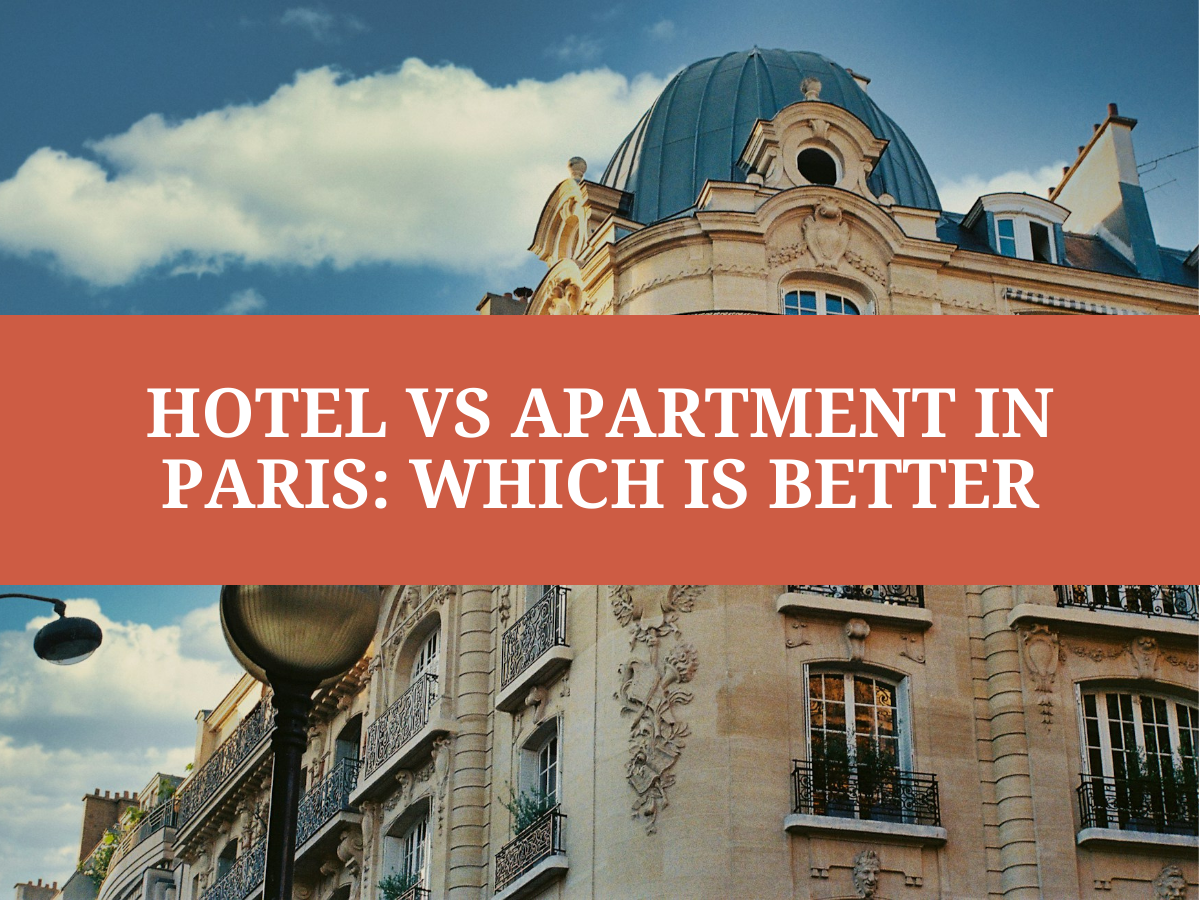7 Best Areas to Stay in Paris for First-Time US Visitors
Where to Stay in Paris on Your First Visit
Choosing where to stay in Paris makes or breaks your first visit. This sprawling city divides into 20 arrondissements that spiral outward from the center like a snail shell, each with distinct character and charm.
This is especially true for visitors traveling from the United States, where cities are structured very differently and distances are perceived differently. We've spent years exploring every neighborhood to help you make the perfect choice.
Le Marais stands out as our top recommendation for travelers visiting Paris for the first time. Located in the 3rd and 4th arrondissements, this area delivers classic Parisian experience with medieval streets, stylish shops, and unbeatable central location. Staying close to the Seine River works as a smart strategy regardless of your final neighborhood choice.
Focus on lower-numbered arrondissements (1-8) if your budget allows. These central areas put iconic landmarks like the Eiffel Tower, Arc de Triomphe, and Latin Quarter within easy reach. Paris's excellent metro system connects you to the entire city from any base location.
Plan at least 4 days in Paris to properly experience the city. This guide covers the 7 best neighborhoods for first-time visitors and highlights 3 areas you should avoid in 2026.
At Paris Vacation Rentals we offer a variety of central properties for your perfect stay in Paris for the first time.
Le Marais (3rd & 4th Arrondissement)
Le Marais spans the 3rd and 4th arrondissements as one of Paris's most captivating neighborhoods. Once marshland (marais means swamp in French), this historic district delivers cultural richness while preserving medieval charm. First-time visitors get authentic Parisian experience with its perfect blend of old-world character and contemporary energy.
What makes Le Marais special
Le Marais distinguishes itself through perfectly preserved medieval architecture and narrow cobblestone streets that escaped Baron Haussmann's 19th-century renovations. French nobility called this district home during the 17th and 18th centuries, building magnificent private mansions called hôtels particuliers.
The neighborhood's cultural tapestry includes its legacy as Paris's Jewish Quarter, with heritage visible along Rue des Rosiers. Today, Le Marais embraces multiple communities – Jewish, LGBTQ+, and artistic – creating atmosphere unlike anywhere else in Paris.
Central location beats everything else for visitors. One resident who's lived there nine years confirms: "I'm able to walk to many Paris attractions from my house. Walking from the Marais can even be quicker than taking the Métro!"
Pros of staying in Le Marais
- Central location: Perfectly positioned for exploring Paris on foot, with easy access to the Seine River, Notre-Dame, and the Louver
- Cultural abundance: Home to numerous museums including the Picasso Museum, Musée Carnavalet (free entry), and Center Pompidou
- Shopping paradise: Features everything from the BHV department store to trendy boutiques, vintage shops, and the oldest covered market in Paris (Marché des Enfants Rouges from 1615)
- Vibrant food scene: Offers countless cafés, restaurants, bakeries, and the famous falafel shops on Rue des Rosiers
- Picturesque surroundings: Contains the stunning Place des Vosges, often called "the most beautiful square in Paris," built in the early 17th century
Cons of staying in Le Marais
Le Marais presents some challenges despite its charm. Well-known attractions and restaurants become incredibly crowded, especially during peak seasons. The narrow, cobblestoned streets that create character may present difficulties for those with mobility issues.
The district's medieval layout makes driving and parking extremely difficult – consider this if you're planning to rent a car. Le Marais has become rather expensive, though not yet as costly as Saint-Germain or the Latin Quarter.
Who should stay in Le Marais
Le Marais works perfectly for first-time visitors who prioritize central location and authentic Parisian atmosphere. History enthusiasts appreciate the preserved architecture and numerous museums. Food lovers indulge in everything from traditional French bistros to international cuisine at the historic Marché des Enfants Rouges.
The neighborhood suits those who enjoy shopping, with its mix of designer boutiques, vintage stores, and unique concept shops. Cultural travelers value proximity to museums and galleries, while nightlife seekers find plenty of cafés, wine bars, and entertainment venues.
It’s also a top choice for American travelers visiting Paris for the first time who want to explore mostly on foot.
Nearby attractions in Le Marais
Le Marais provides convenient access to other Paris highlights beyond its own treasures. The neighborhood contains Place des Vosges, Paris's oldest planned square, perfect for picnicking. The Picasso Museum showcases 400 works across 22 rooms, while the recently renovated Musée Carnavalet tells Paris's story through fascinating exhibits.
Notable attractions include the Center Pompidou with its inside-out architecture, the Maison Victor Hugo where the famous author lived, and numerous hidden gardens like Jardin Anne-Frank. From Le Marais, you can easily walk to Notre-Dame Cathedral, cross the Seine to explore the Latin Quarter, or take direct metro to other major landmarks throughout the city.
Pros of staying in Le Marais
Central location: Perfectly positioned for exploring Paris on foot, with easy access to the Seine River, Notre-Dame, and the Louver
Cultural abundance: Home to numerous museums including the Picasso Museum, Musée Carnavalet (free entry), and Center Pompidou
Shopping paradise: Features everything from the BHV department store to trendy boutiques, vintage shops, and the oldest covered market in Paris (Marché des Enfants Rouges from 1615)
Vibrant food scene: Offers countless cafés, restaurants, bakeries, and the famous falafel shops on Rue des Rosiers
Picturesque surroundings: Contains the stunning Place des Vosges, often called "the most beautiful square in Paris," built in the early 17th century
Cons of staying in Le Marais
Le Marais presents some challenges despite its charm. Well-known attractions and restaurants become incredibly crowded, especially during peak seasons. The narrow, cobblestoned streets that create character may present difficulties for those with mobility issues.
The district's medieval layout makes driving and parking extremely difficult – consider this if you're planning to rent a car. Le Marais has become rather expensive, though not yet as costly as Saint-Germain or the Latin Quarter.
Who should stay in Le Marais
Le Marais works perfectly for first-time visitors who prioritize central location and authentic Parisian atmosphere. History enthusiasts appreciate the preserved architecture and numerous museums. Food lovers indulge in everything from traditional French bistros to international cuisine at the historic Marché des Enfants Rouges.
The neighborhood suits those who enjoy shopping, with its mix of designer boutiques, vintage stores, and unique concept shops. Cultural travelers value proximity to museums and galleries, while nightlife seekers find plenty of cafés, wine bars, and entertainment venues.
Nearby attractions in Le Marais
Le Marais provides convenient access to other Paris highlights beyond its own treasures. The neighborhood contains Place des Vosges, Paris's oldest planned square, perfect for picnicking. The Picasso Museum showcases 400 works across 22 rooms, while the recently renovated Musée Carnavalet tells Paris's story through fascinating exhibits.
Notable attractions include the Center Pompidou with its inside-out architecture, the Maison Victor Hugo where the famous author lived, and numerous hidden gardens like Jardin Anne-Frank. From Le Marais, you can easily walk to Notre-Dame Cathedral, cross the Seine to explore the Latin Quarter, or take direct metro to other major landmarks throughout the city.
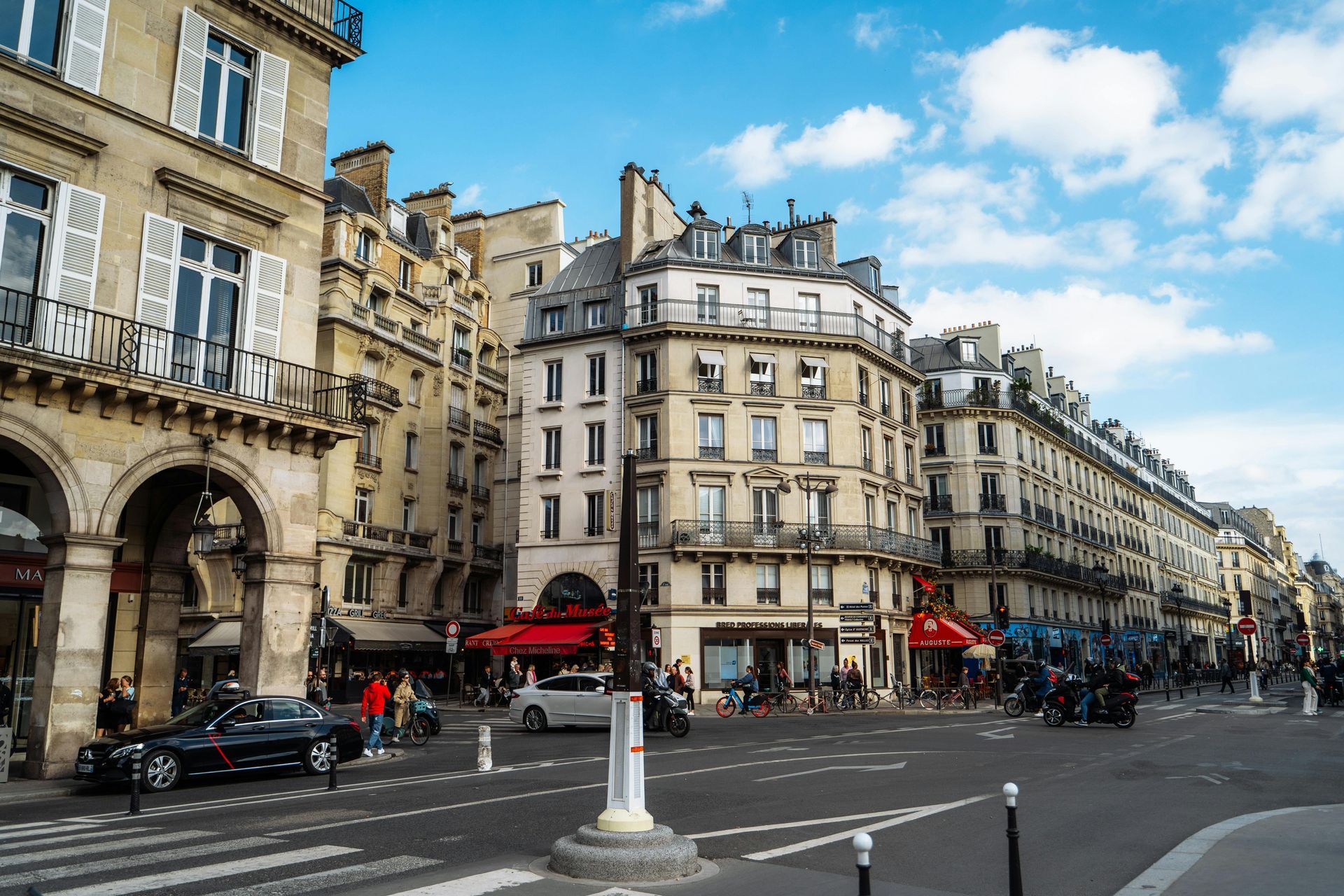
Latin Quarter (5th Arrondissement)
The Latin Quarter delivers authentic Parisian experience many first-time visitors dream about. Nestled on the Left Bank of the Seine River, this historic neighborhood encompasses the 5th arrondissement and earned its name from the Latin language once spoken by students at the Sorbonne University during the Middle Ages. This area retains medieval charm despite centuries of city renovations.
What makes the Latin Quarter special
Rich intellectual heritage dating back to the 12th century sets the Latin Quarter apart when the University of Paris was established. Students from prestigious institutions like the Sorbonne create youthful energy throughout the neighborhood. Winding cobblestone streets evoke medieval Paris, offering glimpses into the city's ancient past.
The area boasts impressive literary legacy. Legendary writers including Ernest Hemingway, James Joyce, and Gabriel García Márquez once called these streets home. This tradition continues through iconic bookshops like Shakespeare and Company, maintaining connections to Lost Generation writers of the 1920s and the Beats of the 1950s.
Pros of staying in the Latin Quarter
Authentic atmosphere: Experience genuine Parisian life where locals actually live and hang out, unlike touristy districts
Cultural abundance: Numerous museums, historic churches, and cultural landmarks within walking distance
Student-friendly prices: More affordable accommodations, restaurants, and cafés compared to other central neighborhoods
Youthful energy: Vibrant ambiance created by student population and lively street life
Culinary diversity: Everything from traditional French bistros to international cuisine along Rue Mouffetard's market street
Familiar atmosphere for U.S. visitors: Thanks to universities, bookstores, and casual dining that feels approachable and relaxed.
Cons of staying in the Latin Quarter
Certain areas present challenges. Around Saint-Michel near the river, expect extremely touristy restaurants catering primarily to visitors rather than locals. The neighborhood sits slightly further from some major attractions compared to other central arrondissements.
Metro connections south of the river prove somewhat less convenient than Right Bank options. Most visitors find the authentic atmosphere and lower prices compensate for this minor inconvenience.
Who should stay in the Latin Quarter
First-time visitors who value history, culture, and buzzing atmosphere find this area ideal. Budget-conscious travelers appreciate relatively lower prices for accommodations and dining compared to other central areas. Literary enthusiasts enjoy tracing famous writers' footsteps and browsing neighborhood bookshops.
This area perfectly suits those preferring authentic Parisian experience with real locals rather than tourist-dominated zones. Nightlife seekers discover plenty of options, from mellow jazz clubs like Caveau de la Huchette to lively student bars.
Nearby attractions in the Latin Quarter
The Panthéon stands as the neighborhood's crowning jewel, where distinguished French citizens including Victor Hugo, Alexandre Dumas, Marie Curie, and recently Josephine Baker are interred. Musée de Cluny houses magnificent medieval treasures, including famous Lady and the Unicorn tapestries, within a Gothic mansion.
Jardin des Plantes spans over 6 acres - this botanical garden has been part of city landscape for 400 years. History buffs should visit Arènes de Lutèce, a remarkably preserved Roman amphitheater dating back to the 1st century.
Accessibility and transport in the Latin Quarter
Getting around proves straightforward. Multiple metro lines (4, 7, 10) and RER B serve the neighborhood, with stations including Cardinal Lemoine, Cluny-La Sorbonne, Jussieu, Place Monge, and Saint-Michel. Buses run regularly throughout the area.
RER B line provides direct connection to Charles de Gaulle Airport for airport arrivals. The central location makes walking to numerous attractions possible, with Notre Dame Cathedral just across the Seine and Luxembourg Gardens bordering the western edge.
What makes the 7th Arrondissement special
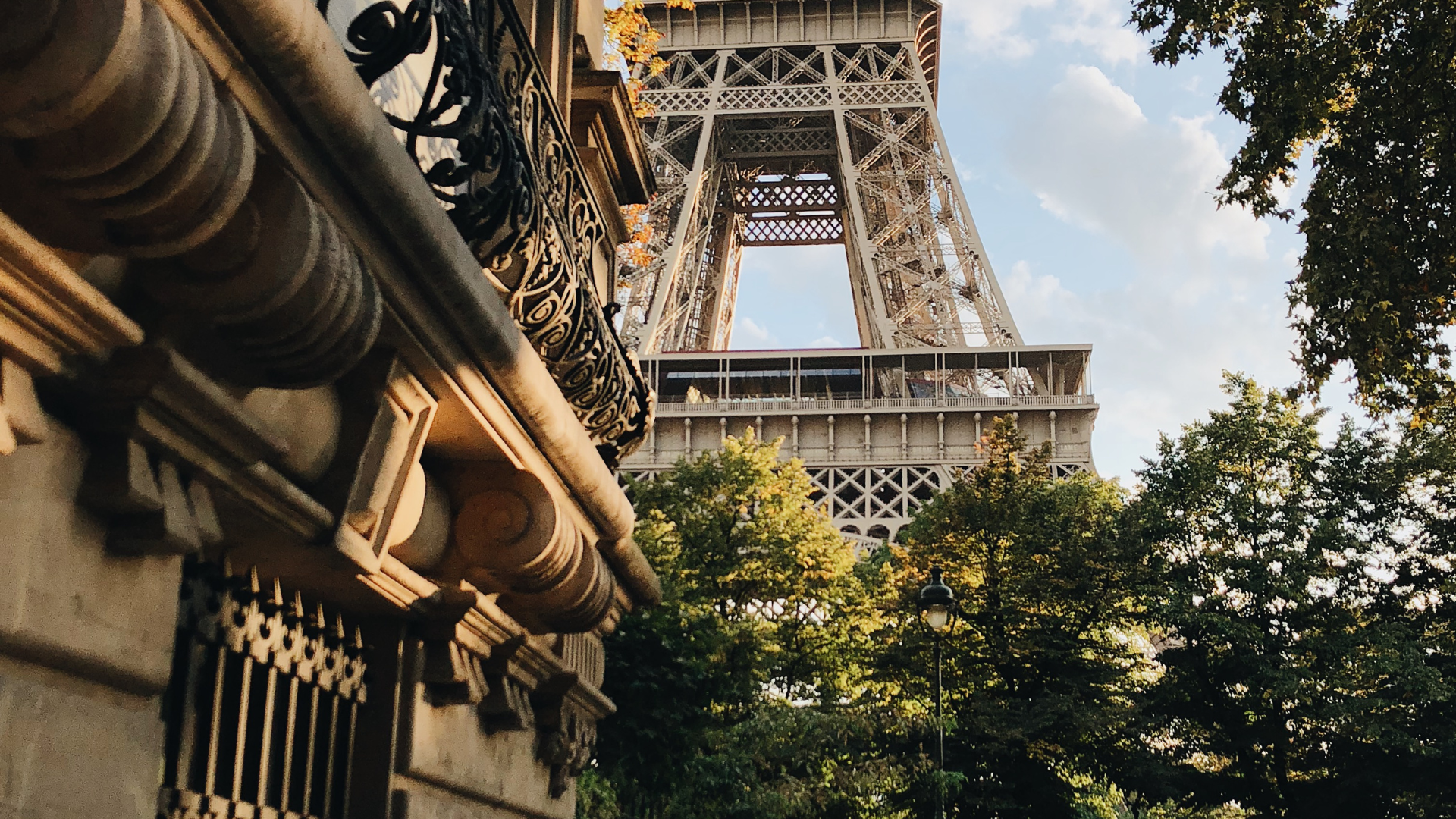
The prestigious 7th arrondissement delivers the quintessential Parisian postcard experience most first-time visitors dream about. Situated on the Left Bank of the Seine with the iconic Eiffel Tower as its centerpiece, this upscale district combines historical significance with refined residential charm.
What makes the 7th Arrondissement special
This area stands out as one of Paris's finest neighborhoods. The 7th houses not only the world-famous Eiffel Tower but numerous governmental ministries, embassies, and historical aristocratic residences. Elegant Haussmann-style architecture and tree-lined avenues maintain an air of sophistication. You get the Paris most first-time visitors envision – classic, picturesque, and unquestionably French.
The district offers peaceful streets and genuine glimpses into upscale Parisian living. You'll find a serene escape from the city's bustle while staying centrally positioned for exploration.
Pros of staying near the Eiffel Tower
- Perfect for families: The quieter atmosphere makes it ideal for those traveling with children
- Spectacular views: Many accommodations offer views of the Eiffel Tower
- Safety and tranquility: Considered extremely safe and predominantly residential
- Excellent transport connections: The RER is conveniently located for quick access to major attractions like Musée d'Orsay and the Latin Quarter
- Charming markets: Includes Rue Cler market and several open-air markets with fresh produce
Cons of staying near the Eiffel Tower
Staying near such a famous landmark comes with significant drawbacks. The immediate area around the Eiffel Tower functions as a tourist trap with inflated prices for accommodations, restaurants catering primarily to visitors, and substantial crowds.
The tower receives approximately 7 million visitors annually, with 75% being foreign tourists, creating a somewhat artificial environment. The district offers fewer dining options and nightlife compared to other Paris neighborhoods. This area sits slightly farther from other major Parisian attractions if you're exploring on foot.
Who should stay in the 7th Arrondissement
The 7th arrondissement suits families seeking a calm base, travelers who prioritize safety, and those enchanted by the idea of Eiffel Tower views from their window. First-time visitors who envision a classic, postcard-perfect Parisian experience will appreciate its elegant streets and historic ambiance.
This district works wonderfully for US travelers comfortable with public transportation. The area connects well with metro, RER, and scenic bus routes – notably the #72 bus which travels along the Seine to the Louver.
Nearby attractions in the 7th Arrondissement
The neighborhood boasts cultural treasures surrounding its main attraction. Champ de Mars provides sprawling green space perfect for picnics with Eiffel Tower views. The majestic Hôtel des Invalides stands nearby with its golden dome housing Napoleon's tomb.
The acclaimed Musée d'Orsay, housed in a former railway station, showcases impressive Impressionist collections. Art enthusiasts will appreciate the Musée Rodin, displaying famous sculptures like The Thinker within beautiful garden settings. For something uniquely Parisian, visit the Musée des Egouts (Sewer Museum) for an unconventional glimpse into the city's infrastructure.
1st Arrondissement (Louver & Tuileries)
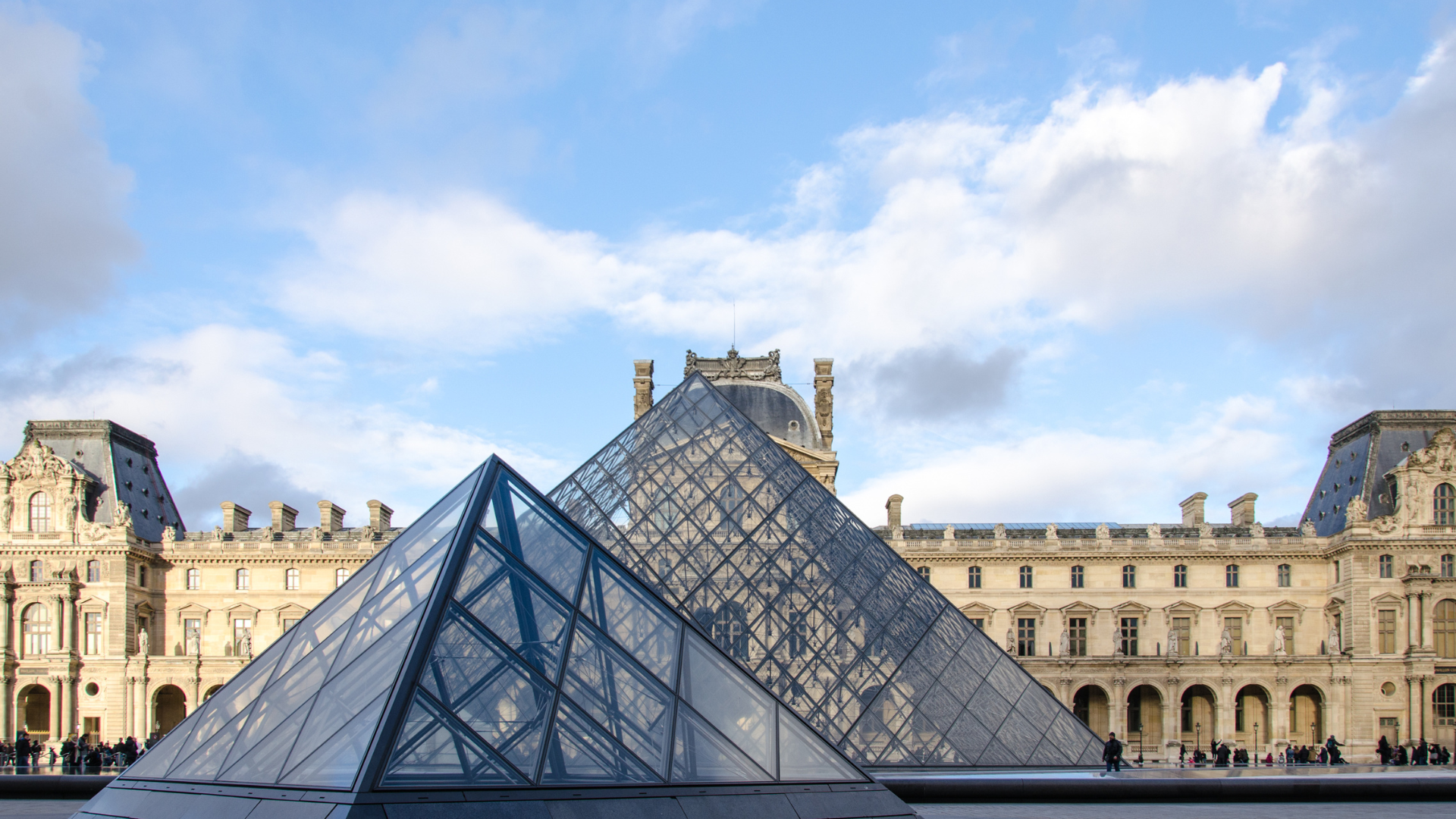
The historic heart of Paris houses royal palaces and world-class museums that embody the city's grandeur. This district, called "Royal Paris," represents the original center from which the city expanded outward. The 1st Arrondissement offers unparalleled access to iconic attractions yet presents certain trade-offs worth considering.
What makes the 1st Arrondissement special
The 1st Arrondissement stands as the least populated yet culturally richest district in Paris. French kings and emperors once called this royal quarter home, leaving behind magnificent architecture and formal gardens. The Louver Museum and Tuileries Gardens occupy nearly a third of the arrondissement's total area, creating an extraordinary cultural landscape. Elegant boulevards, designed for royal processions, now connect major landmarks and luxury shopping destinations.
Pros of staying in the 1st Arrondissement
- Unbeatable central location – Perfect for exploring Paris on foot with Notre Dame, Le Marais, and République all within walking distance
- Cultural abundance – Home to the world's largest museum (Louver), Musée de l'Orangerie, Palais Royal, and numerous historical sites
- Shopping paradise – From the Carrousel du Louver shopping center to luxury boutiques on Rue Saint Honoré and Department stores
- Excellent transportation – Well-served by multiple metro lines making it easy to reach any part of Paris
- Beautiful parks – The formal Tuileries Garden offers respite from urban exploration
Cons of staying in the 1st Arrondissement
The district's popularity creates significant drawbacks. As the most touristic part of Paris, the 1st Arrondissement becomes extremely crowded, with sidewalks packed with tour groups. This tourist concentration affects local amenities, with many restaurants and shops catering primarily to visitors rather than residents.
Living costs present another consideration. The 1st Arrondissement features some extraordinarily expensive areas, including Quai des Orfèvres on Île de la Cité, where property averages €23,002 per square meter. One-bedroom apartments typically rent for €2,500-€4,000 monthly, placing it firmly in the luxury category.
Who should stay in the 1st Arrondissement
This district suits first-time visitors who prioritize convenience and access to major attractions. Art enthusiasts will appreciate unlimited access to world-class museums, since this neighborhood houses the Louver with its 40,000 displayed artworks. Luxury shoppers will enjoy proximity to Place Vendôme's jewelry houses and high-end fashion boutiques.
Nearby attractions in the 1st Arrondissement
The magnificent Louver and Tuileries Gardens anchor numerous cultural treasures. The elegant Palais Royal provides a peaceful escape with its beautiful arcade shops and serene garden. Sainte-Chapelle showcases extraordinary medieval stained glass, yet remains less crowded than Notre Dame.
Place Vendôme stands as a symbol of Parisian luxury with its grand architecture and high-end jewelry stores. Visit Rue Montorgueil's lively market street or sample famous hot chocolate at Angelina tea salon. The Seine riverbanks offer romantic strolls with views of Île de la Cité, providing perfect photo opportunities.
2nd Arrondissement (Sentier & Montorgueil)
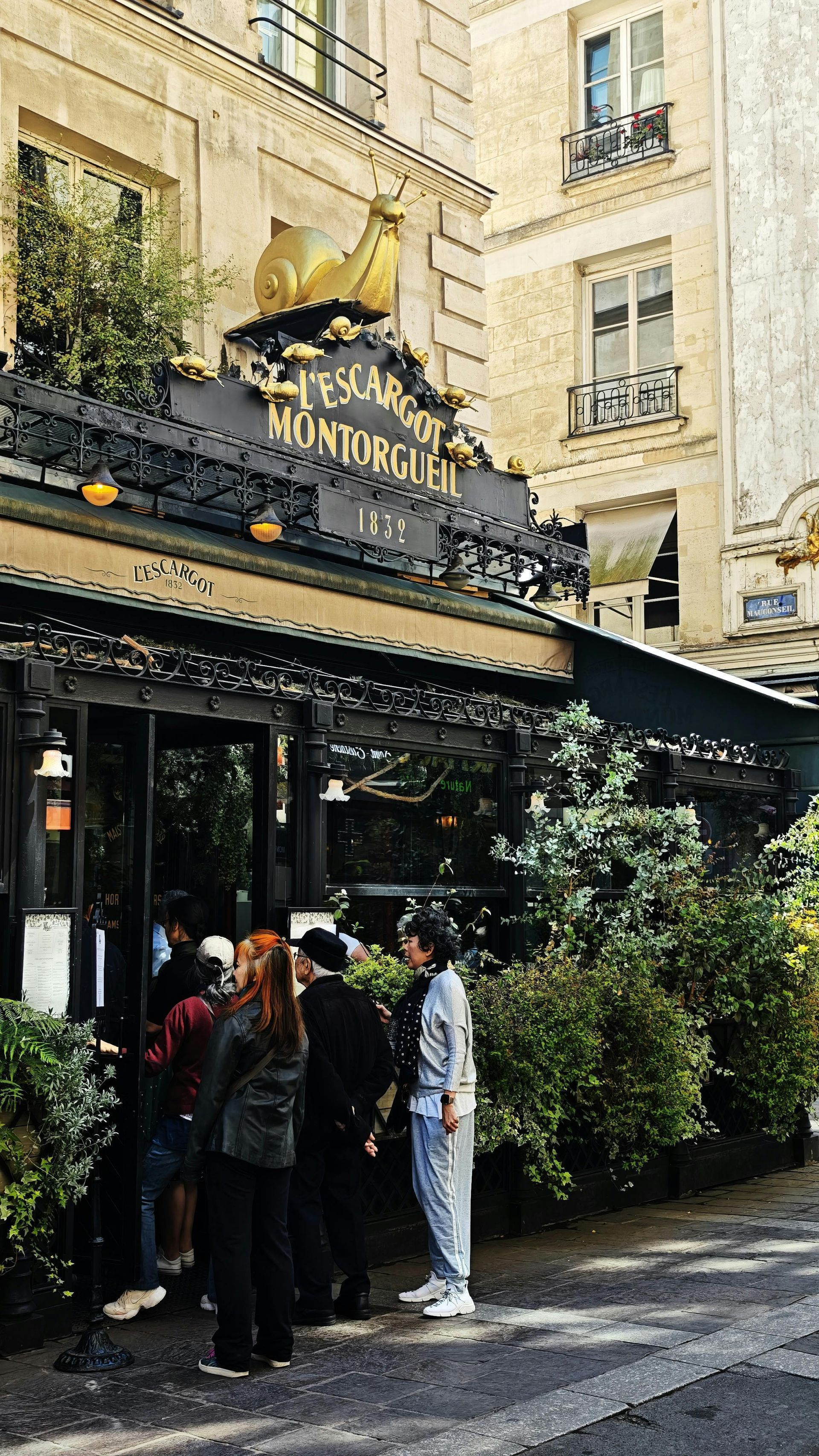
The charming 2nd Arrondissement delivers authentic Parisian experience away from overwhelming tourist crowds. As the smallest district in Paris covering merely 0.99 km², this compact area packs extraordinary variety into its narrow streets. Right in the heart of historic Paris between the Louver and grand boulevards, this overlooked gem combines vibrant street life with genuine local atmosphere.
What makes the 2nd Arrondissement special
The 2nd stands out for its unique blend of old-world charm and contemporary energy. The district encompasses three distinct neighborhoods: Bourse (the financial district), trendy Sentier (now nicknamed "Silicon Sentier" due to its tech startups), and the food-lovers' paradise of Montorgueil. History buffs appreciate the area's beautiful 19th-century covered shopping arcades like Passage des Panoramas and Galerie Vivienne, offering glimpses into Paris's elegant past.
Pros of staying in the 2nd Arrondissement
- Central location - Perfect position for exploring Paris on foot with easy access to the Louver, Le Marais, and other central attractions
- Authentic experience - Fewer tourists yet bustling with locals, providing genuine slice of Parisian life
- Culinary paradise - Home to Rue Montorgueil, pedestrian-only market street packed with bakeries, cheese shops, cafés, and the oldest patisserie in Paris (Stohrer, dating from 1730)
- Excellent transport - Well-served by metro lines 3, 4, 7, 8, and 9, plus access to RER A line
- Vibrant atmosphere - Combines business energy with neighborhood charm
Cons of staying in the 2nd Arrondissement
The business character means the district becomes quite busy during weekdays, with streets filled with workers rushing to and from offices. Certain areas like Rue Montorgueil can be noisy, especially evenings and early mornings due to restaurant activity and deliveries. Some might find it lacks postcard-perfect views of the Eiffel Tower or Seine that first-time visitors often seek.
Who should stay in the 2nd Arrondissement
Ideally suited for travelers seeking authentic Paris beyond tourist clichés while remaining centrally located. Food enthusiasts will delight in the neighborhood's culinary scene, from market streets to Asian cuisine along Rue Sainte-Anne. Budget-conscious visitors appreciate its relative value compared to ultra-premium 1st or 7th arrondissements.
Nearby attractions in the 2nd Arrondissement
Beyond its famous covered passages, visitors can explore the former Palais Brogniart (Paris stock exchange), experience movie magic at Le Grand Rex (Europe's largest cinema), or simply wander the charming pedestrianized Rue Montorgueil with its quintessential Parisian shops. The area offers convenient access to Center Pompidou, Notre Dame, and the Seine – all perfect starting points for first-time Paris explorers.
Conclusion
Your neighborhood choice shapes your entire Paris experience. Le Marais delivers that perfect historic charm with contemporary energy, while the Latin Quarter provides authentic Parisian life through its academic heritage and vibrant streets.
Stick to lower-numbered arrondissements (1-8) for your first visit. These central areas put you within walking distance of iconic landmarks like the Eiffel Tower and Arc de Triomphe.
Safety considerations matter. Avoid outer arrondissements and specific spots like Pigalle after dark. Your personal preferences guide the final decision - families appreciate the quieter 7th arrondissement near the Eiffel Tower, while food enthusiasts find paradise in the 2nd arrondissement's market streets.
Paris shows different faces depending on your base. The elegant 1st arrondissement showcases royal grandeur. Montmartre presents bohemian village atmosphere atop its famous hill. Budget-conscious travelers can look toward the Latin Quarter or parts of the 9th arrondissement, though central Paris prices remain relatively high.
Paris boasts excellent public transportation. Any central neighborhood serves as a perfect starting point for city exploration. Book your perfect stay in Paris with Paris Vacation Rentals to secure accommodations in these desirable neighborhoods matching your specific travel style and budget.
Pick a neighborhood that speaks to your interests rather than simply chasing the closest landmark. Whether you dream of morning croissants at a local café in Le Marais or sunset views of the Eiffel Tower from Trocadéro Gardens, the perfect Parisian neighborhood awaits your discovery.
What is the best area for first-time visitors to stay in Paris?
Le Marais is an excellent choice for first-timers, where Paris Vacation Rentals offer best prices and services. It's centrally located with easy access to major attractions, and offers a perfect blend of historic charm and contemporary energy. The area is filled with charming cafés, boutiques, and art galleries, providing an authentic Parisian experience.
Which neighborhood in Paris offers the best balance of attractions and local life?
The Latin Quarter (5th arrondissement) provides an ideal mix of tourist attractions and authentic Parisian life. It's home to numerous cultural sites, has a vibrant student atmosphere, and offers more affordable dining and accommodation options compared to other central areas.
Is it worth staying near the Eiffel Tower?
While staying near the Eiffel Tower offers iconic views, it has drawbacks. The area can be touristy and expensive. However, the 7th arrondissement is quiet, safe, and ideal for families. Consider your priorities when deciding - views and prestige versus a more authentic neighborhood experience.
What should first-time visitors to Paris be cautious about when choosing accommodation?
First-time visitors should be wary of staying in outer arrondissements (particularly 10th, 18th, 19th, and 20th) as they may require more caution, especially after dark. Also, avoid the immediate area around Champs-Élysées, which is often overcrowded, overpriced, and lacks authentic Parisian charm. Instead, focus on central areas for convenience and safety.



